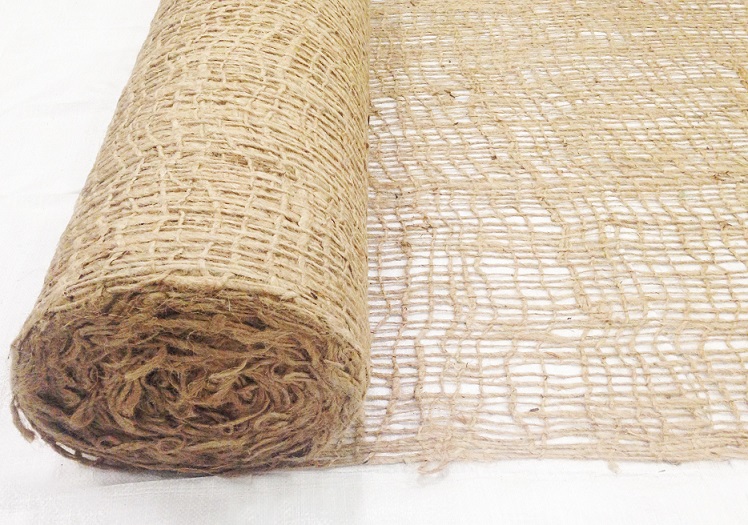- April 26, 2024
- Posted by: wellcoindustries
- Categories: Erosion Control, Jute Mesh
Introduction to Jute Netting
Jute netting, derived from the jute plant, stands as a prime example of sustainable material used across various industries. This guide explores the journey of jute from its natural fiber form to a critical component in environmental conservation and economical decor solutions.

Historical Context and Production of Jute
Origin of Jute Cultivation
Jute cultivation dates back thousands of years, primarily in the Bengal area, which comprises modern-day Bangladesh and parts of India. Its use historically for ropes and sackcloth has evolved significantly over the centuries.
Global Jute Production
Today, India and Bangladesh remain the largest producers of jute, influencing global economies and promoting sustainable practices in agriculture and manufacturing industries.
Physical and Chemical Properties of Jute
Durability and Lifespan
Jute fibers are known for their strength and flexibility, making them ideal for products requiring durability under environmental stress, such as jute netting.
Biodegradability and Environmental Impact
One of the most significant properties of jute is its biodegradability. This feature makes it a preferred choice for applications where environmental impact is a critical concern.
Types of Jute Netting
Erosion Control Netting
In civil engineering, jute netting is extensively used to prevent soil erosion on slopes and in areas susceptible to erosion by water or wind.
Jute Mesh for Gardening
Gardeners favor jute mesh for its ability to protect young seedlings and support soil stability, enhancing plant growth without harming the surrounding environment.
Decorative Jute Fabrics
Beyond practical applications, jute is also celebrated for its aesthetic value, often used in home decor for creating rustic and eco-friendly atmospheres.
Applications of Jute Netting
Erosion Control in Civil Engineering
Jute netting plays a pivotal role in stabilizing soil and promoting the growth of vegetation on steep slopes, proving its efficacy in numerous global projects.
Use in Agriculture and Horticulture
From protecting soil moisture to controlling weeds, jute netting’s applications in agriculture are vast and varied.
Applications in Home Decor
Jute’s natural texture and appearance make it a popular choice for home decor items such as window treatments, area rugs, and upholstery.
Benefits of Using Jute Netting
Sustainability and Eco-friendliness
Jute netting is 100% biodegradable, making it an environmentally responsible alternative to synthetic materials.
Cost-Effectiveness and Accessibility
Jute is not only effective but also economical, offering a low-cost solution for various industrial, agricultural, and decorative needs.
Versatility in Use
Its adaptability to different environments and purposes makes jute netting a versatile option in numerous fields.
Case Studies: Jute Netting in Action
Erosion Control Projects
Examples of successful erosion control projects using jute netting can be found worldwide, showcasing its effectiveness in environmental preservation efforts.
Agricultural Implementations
In agriculture, jute netting has been instrumental in improving crop yields and soil health through innovative applications.
Maintenance and Care of Jute Netting
Cleaning and Storage
Maintaining jute netting involves simple cleaning techniques and proper storage practices to extend its life and performance.
Longevity Tips
Tips for maximizing the lifespan of jute products include avoiding prolonged exposure to moisture and UV light.
Comparison with Other Natural Fibers
Jute vs. Coir
While both are excellent for environmental projects, jute tends to be softer and more pliable, making it suitable for applications requiring gentler fiber.
Jute vs. Sisal
Compared to sisal, jute offers better insulation properties and is generally more cost-effective for similar applications.
Jute Netting: Applications and Benefits
This section recaps the primary uses and advantages of jute netting, reinforcing its role as a sustainable, versatile, and cost-effective material.
Conclusion
In conclusion, jute netting is not only a testament to the versatility and sustainability of natural fibers but also a crucial element in ecological conservation and economical solutions across various sectors.
